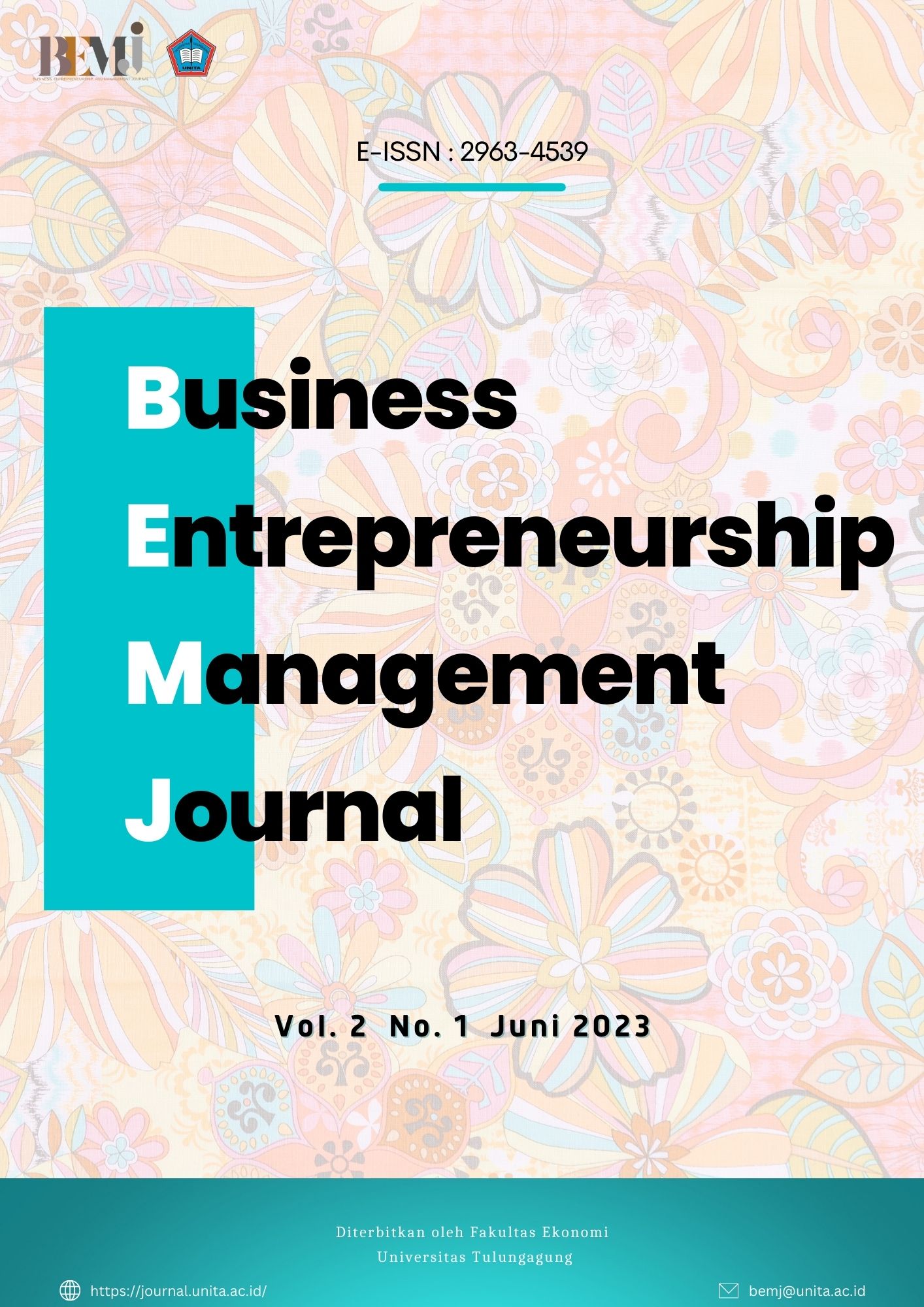PENGARUH PERSEPSI DIMENSI KUALITAS LAYANAN TERHADAP NIAT PEMBELIAN ULANG (Studi Kasus pada Swalayan IT Mart UNITA)
DOI:
https://doi.org/10.36563/bemj.v2i1.789Keywords:
Perceived Service Quality, Consumer Satisfaction, Repurchase IntentionAbstract
This study aims to explain the effect of the variable perceived service quality on repurchase intentions which is moderated by the variable student satisfaction at the IT Mart Supermarket at Tulungagung University. The sample in this study were some students who shopped at the IT Mart supermarket at Tulungagung University, the number was 100 students and the sampling technique used was purposive sampling technique. Data obtained through primary data by distributing questionnaires. Analysis was performed using multilevel regression analysis. The results showed that the perceived service quality variable had an effect on repurchase intentions. Perceived service quality variable and satisfaction variable together influence repurchase intention. The perceived service quality variable influences repurchase intention through satisfaction as a moderating variable for IT Mart supermarkets at Tulungagung University. The implications for IT Mart supermarket managers at Tulungagung University can develop marketing strategies to improve the quality of service to their consumers.
Downloads
References
Chaniago, Harmon. 2021. “Manajemen Ritel & Implementasinya.” Bandung: Edukasi Riset Digital PT.
Hardiyansyah, Hardiyansyah. 2018. Kualitas Pelayanan Publik: Konsep, Dimensi, Indikator Dan Implementasinya. Gava Media.
Kotler, Philip. 2012. Kotler on Marketing. Simon and Schuster.
———. 2018. “Manajemen Pemasaran Edisi 13 Jilid 1.”
Ritonga, Zuriani. 2020. Buku Ajar Manajemen Strategi (Teori Dan Aplikasi). Deepublish.
Sari, Dian Cita et al. 2021. Manajemen Pemasaran. Media Sains Indonesia.
Setiadi, Nugroho J, and M M SE. 2015. Perilaku Konsumen: Edisi Revisi. Kencana.
Simamora, Henry. 2010. “Manajemen Pemasaran.” Jakarta, Penerbit Salemba Empat.
Suliyanto, S E, and Suliyanto MM. 2017. “Metode Penelitian Kuantitatif.”
Sundari, Ariefah, and Ahmad Yani Syaikhudin. 2021. Manajemen Ritel (Teori Dan Strategi Dalam Bisnis Ritel). Academia Publication.
Sunyoto, Danang, and Agus Mulyono. 2022. “Manajemen Bisnis Ritel.”
Sunyoto, Danang, and Yanuar Saksono. 2022. “Perilaku Konsumen.”
Tjiptono, Fandy. 2019. “Strategi Pemasaran.”
Tjiptono, Fandy, and Anastasia Diana. 2020. “Pemasaran.”
Unaradjan, Dominikus Dolet. 2019. Metode Penelitian Kuantitatif. Penerbit Unika Atma Jaya Jakarta.
Utami, Indah Wahyu. 2017. “Perilaku Konsumen.” Surakarta: CV Pustaka Bengawan.
Wibowo, Sarwo Eddy et al. 2013. “Pengaruh Persepsi Kualitas Pelayanan Terhadap Niat Pembelian Ulang Pada Toko Buku Gramedia Yogyakarta.” Jurnal Ekonomi 4(1): 56–64.
Zeithaml, Valarie A, Arun Parasuraman, and Arvind Malhotra. 2012. “Service Quality Delivery through Web Sites: A Critical Review of Extant Knowledge.” Journal of the academy of marketing science 30(4): 362–75.
Downloads
Published
Issue
Section
License
Authors who publish with this journal agree to the following terms:
- Copyright on any article is retained by the author(s).
- The author grants the journal, right of first publication with the work simultaneously licensed under a Creative Commons Attribution License that allows others to share the work with an acknowledgment of the work’s authorship and initial publication in this journal.
- Authors are able to enter into separate, additional contractual arrangements for the non-exclusive distribution of the journal’s published version of the work (e.g., post it to an institutional repository or publish it in a book), with an acknowledgment of its initial publication in this journal.
- Authors are permitted and encouraged to post their work online (e.g., in institutional repositories or on their website) prior to and during the submission process, as it can lead to productive exchanges, as well as earlier and greater citation of published work.
- The article and any associated published material is distributed under the Creative Commons Attribution-ShareAlike 4.0 International License
Deprecated: json_decode(): Passing null to parameter #1 ($json) of type string is deprecated in /home/journal.unita.ac.id/public_html/plugins/generic/citations/CitationsPlugin.php on line 68


_(1).png)



